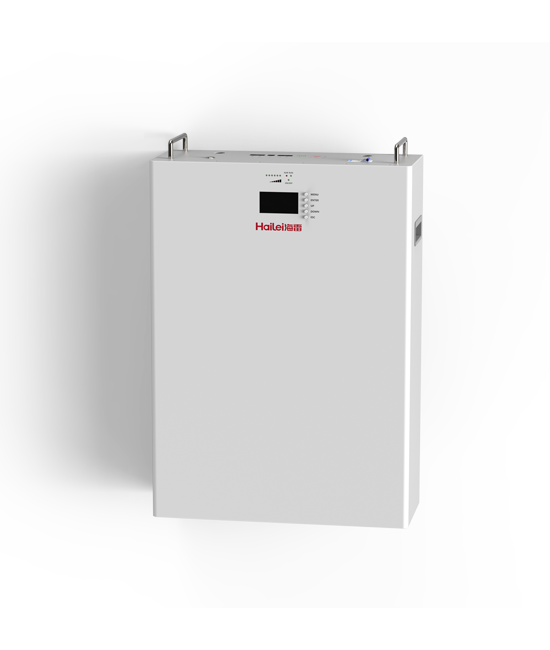Time:Aug 21, 2023 Views:892
1. Mechanical energy storage: mainly including pumped storage, compressed air energy storage, and flywheel energy storage.
(1) Pumped storage: It refers to the process of using excess electricity as a liquid energy medium during low power grid periods to pump water from reservoirs with low terrain to reservoirs with high terrain. During peak load of the power grid, the water from reservoirs with high terrain flows back to the lower reservoir to drive water turbine generators to generate electricity. The efficiency is generally around 75%, commonly known as 4 in and 3 out. It has daily regulation capacity and is used for peak regulation and backup. Shortcomings: Difficulty in location selection, extremely dependent on terrain; The investment cycle is long and the losses are high, including pumping losses and line losses.

(2) Compressed air energy storage: It uses the remaining electricity from the low load of the power system to drive an air compressor by an electric motor, which compresses the air into a sealed, large capacity underground cave that serves as a gas storage chamber. When the system's power generation is insufficient, the compressed air is mixed with oil or natural gas through a heat exchanger and burned, leading it into a gas turbine for power generation. Compressed air storage also has peak shaving function and is suitable for large-scale wind farms, as the mechanical work generated by wind energy can directly drive the compressor to rotate, reducing the intermediate conversion to electricity and improving efficiency. Shortcomings: Low efficiency.
(3) Flywheel energy storage: It uses a high-speed rotating flywheel to store energy in the form of kinetic energy. When energy is needed, the flywheel slows down to release the stored energy. Shortcomings: The energy density is not high enough and the self discharge rate is high. If the charging is stopped, the energy will self exhaust within a few to dozens of hours.
2. Electrical energy storage: mainly including supercapacitor energy storage and superconducting energy storage.
(1) Supercapacitor energy storage: It is a double layer structure composed of activated carbon porous electrodes and electrolytes to obtain extremely large capacitance. Short charging time, long service life, good temperature characteristics, energy conservation, and green environmental protection. Shortcomings: Compared to batteries, their energy density results in relatively low energy storage at the same weight, which directly leads to poor endurance and relies on the birth of new materials, such as graphene.
(2) Superconductive energy storage: A device that stores electrical energy using the zero resistance characteristic of a superconductor. The superconducting energy storage system roughly includes four parts: superconducting coils, low-temperature systems, power regulation systems, and monitoring systems. Shortcomings: The high cost of superconducting energy storage (materials and low-temperature refrigeration systems) greatly limits its application. The constraints of reliability and economy still require commercial application.
3. Electrochemical energy storage: mainly including lead-acid batteries, lithium-ion batteries, sodium sulfur batteries, and liquid flow batteries.
(1) Lead acid battery: It is a type of battery with electrodes mainly made of lead and its oxides, and the electrolyte is a sulfuric acid solution. Widely used, with a cycle life of about 1000 cycles, an efficiency of 80% -90%, and high cost-effectiveness; Shortcomings: If deep, fast, and high-power discharge occurs, the available capacity will decrease.
(2) Lithium ion battery: It is a type of battery that uses lithium metal or lithium alloy as the negative electrode material and uses a non-aqueous electrolyte solution. The number of cycles can reach 5000 or more, and the response is fast, making it the most practical battery with the highest energy among batteries; Shortcomings: There are safety issues such as high prices (4 yuan/wh), overheating caused by overcharging, and combustion, which require charging protection.
(3) Sodium sulfur battery: It is a secondary battery that uses metallic sodium as the negative electrode, sulfur as the positive electrode, and ceramic tubes as the electrolyte separator. The cycle cycle can reach 4500 times, the discharge time is 6-7 hours, the cycle round-trip efficiency is 75%, the energy density is high, and the response time is fast. Shortcomings: Due to the use of liquid sodium, it is easy to burn when operating at high temperatures.
(4) Fluid flow battery: A high-performance battery that utilizes the separation of positive and negative electrode electrolytes and their respective cycles. It can store energy for hours to days, with a capacity of up to MW level; Shortcomings: The battery volume is too large; The battery requires too high ambient temperature; The price is expensive and the system is complex.
4. Thermal energy storage
In a thermal energy storage system, thermal energy is stored in the medium of an insulated container and converted back into electrical energy when needed, or can be directly utilized without being converted back into electrical energy. Thermal energy storage can be further divided into sensible and latent energy storage. Thermal energy storage can store a large amount of heat, so it can be utilized for renewable energy generation. Shortcomings: Thermal energy storage requires various high-temperature chemical thermal working fluids, which are relatively limited in usage.

X

Appointment Experience